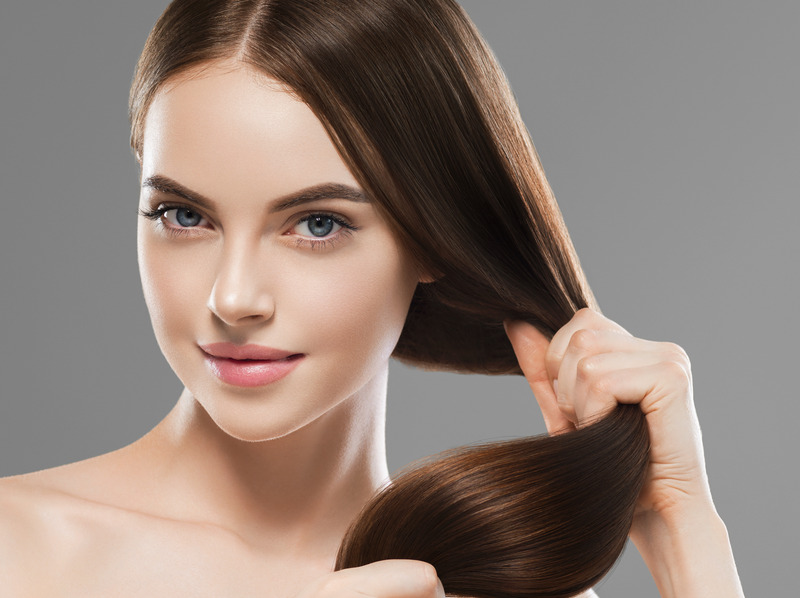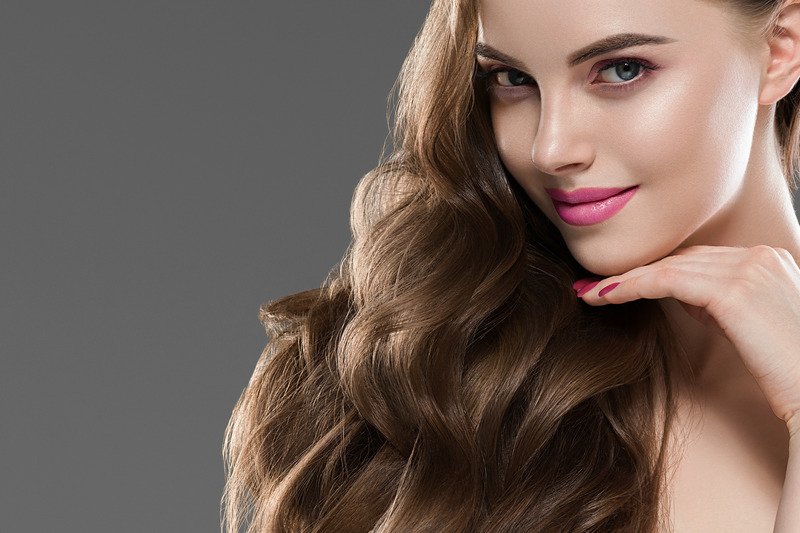
Hair is often considered the crowning glory, an extension of our identity. Healthier hair is a universal aspiration, and to this end, we delve deep into tips for healthy hair that cater to every hair type and concern attaining lustrous.
Whether grappling with oily hair, aiming for shiny hair, or addressing hair loss, these tips encompass every facet of hair health.
Understanding Your Hair Type
Before diving into a pool of healthy hair tips, it’s essential to understand your hair type. Knowing whether you have oily hair, dry hair, thin hair, or color-treated hair plays a significant role in determining the care it needs.
Just as skin types vary and necessitate tailored care routines, your hair type requires customized attention to shine at its brightest.
Oily Hair
Oily hair demands regular washing to keep the scalp clean and avoid clogged hair follicles. However, overwashing can strip the hair of its natural oils, leading to increased oil production and a vicious cycle of greasiness.
Dry or Damaged Hair
Dry or damaged hair craves extra hydration. Hair damage can result from heat styling, overwashing, or using harsh products, leading to brittle hair that’s prone to breakage.
Color Treated Hair
This hair type requires products to protect hair color and maintain hair health. Choosing gentle, color-safe shampoos and conditioners is essential.
Thin Hair
Thin hair benefits from volumizing products and gentle handling to avoid further thinning and hair loss.
The Science of Hair: Follicles, Shaft, and Growth

To foster healthier hair, a grasp of hair science is invaluable. The hair follicle anchors each strand to your scalp, and a healthy follicle supports hair growth and strength.
The hair shaft, the visible part of your hair, needs protection from damage to maintain its luster and resilience.
1. Hair Follicles: Hair follicles are the starting point of hair growth. Healthy follicles result in intense, shiny hair, while clogged or unhealthy follicles can lead to hair loss and thinning.
2. Hair Shaft: The hair shaft is comprised of a protein called keratin. Protecting the shaft from heat styling, harsh chemicals, and physical damage contributes to healthier hair.
3. Hair Growth: Nutrition, scalp health, and proper care influence hair growth. A balanced diet, regular scalp massages, and avoiding heat styling can promote growth and prevent hair loss.
15 Top Tips for Healthy Hair

Armed with knowledge about hair types and science, let’s delve into some top tips for achieving and maintaining healthier hair:
1. Wash Your Hair Appropriately
Avoid washing your hair daily, as it can take off of natural oils, leaving it dry and brittle. Find a routine that works best for your hair type.
-
Oily Hair: If you have oily hair, washing it every other day can help manage oil production and keep your scalp clean. Use a mild, balancing shampoo to prevent over-stripping of natural oils.
-
Dry or Damaged Hair: Washing 2-3 times a week is sufficient for dry or damaged hair. Look for hydrating shampoos and conditioners to replenish moisture.
-
Color-Treated Hair: Wash color-treated hair as infrequently as possible to preserve the hair color, and always use color-safe products.
-
Thin Hair: Individuals with thin hair should avoid daily washing to prevent hair from becoming more fragile. Volumizing shampoos can add body and bounce.
2. Protect Hair from Heat Styling
Regularly using hot tools like hair dryers, straighteners, or curling irons can cause damage to brittle hair. Whenever possible, allow your hair to air-dry and embrace its natural texture.
If heat styling is necessary, always use a heat protectant spray or serum to shield the hair shaft from high temperatures.
3. Don’t Brush Wet Hair
Hair strands are most vulnerable when wet. Instead of using a brush, gently detangle wet hair with a wide-tooth comb, starting from the tips and working your way up to the roots.
This method reduces breakage and helps maintain hair healthy.
4. Nourish Your Hair
A well-balanced diet rich in essential vitamins and minerals can significantly impact hair health, promoting hair growth and preventing hair loss. Incorporate foods rich in Omega-3 fatty acids, protein, vitamins A, C, D, and E, and minerals like iron and zinc to nourish hair follicles and promote healthy hair growth.
Foods like salmon, nuts, seeds, berries, spinach, and eggs are excellent choices.
5. Trim Regularly
Regularly trimming your hair every six to eight weeks is important in eliminating split ends and preventing them from progressing up the hair shaft. This helps avoid breakage and maintains the lustrous shine of your hair.
Regular trims encourage healthier hair and maintain shape and style.
6. Use Gentle Products
Opt for shampoos, conditioners, and styling products that are free of harsh chemicals, especially for color-treated hair. Gentle, natural ingredients are kinder to your hair and scalp, maintaining the integrity of the hair shaft and promoting overall hair health.
7. Protect Hair from Environmental Damage
Sun Protection – Excessive sun exposure can harm the hair cuticle, resulting in dry and fragile hair. Protect your hair from the damaging effects of UV rays by wearing a hat or using hair products infused with UV protection.
Chlorine Protection – Wash your hair with warm water before swimming in a chlorinated pool and apply a leave-in conditioner to create a protective barrier against chlorine.
8. Stay Hydrated
Hydration plays a crucial role in maintaining healthy hair. Drinking enough water ensures your hair follicles receive the required nutrients for hair growth and strength. Aim for at least eight glasses of water daily to keep your hair shining and your body thriving.
9. Avoid Tight Hairstyles
Consistently wearing your hair in tight hairstyles such as ponytails, braids, or buns can cause stress on your hair follicles and cause hair loss over time. Opt for looser styles, and give your hair a break between tight updos to prevent traction alopecia.
10. Sleep on a Silk Pillowcase
Traditional cotton pillowcases can cause friction, leading to hair breakage and split ends. Silk pillowcases are smoother and create less friction, thereby reducing hair damage and maintaining your hair’s natural oils.
11. Apply Hair Masks
Regardless of your hair type, incorporating a nourishing hair mask into your routine can provide extra hydration and repair damaged hair. For a moisture boost, look for masks with natural ingredients like avocado, honey, or coconut oil.
12. Avoid Hot Water
Washing your hair with hot water can strip it of essential oils, letting it dry and prone to damage. Replacing hot water with lukewarm water when washing your hair is recommended to achieve optimal results.
Conclude the hair-care routine with a refreshing, cool rinse, as it assists in sealing the hair cuticle and enhances its natural shine.
13. Limit Chemical Treatments
Frequent coloring, perming, or straightening treatments can damage the hair shaft and lead to brittle, dry hair. Limit chemical treatments and ensure you take extra steps to nourish and protect chemically treated hair.
14. Massage Your Scalp
Regular scalp massages can increase blood flow to your hair follicles, encouraging hair growth and overall hair health. Use your fingertips to gently massage your scalp in circular motions while washing your hair or before bedtime.
15. Manage Stress
Chronic stress can contribute to hair loss and hinder hair growth. Incorporate stress-management techniques such as exercise, meditation, or deep breathing into your routine to maintain both your hair health and overall well-being.
Conclusion
Shiny hair doesn’t require an arsenal of expensive products or a time-consuming routine to achieve healthy hair. Understanding your hair type, being mindful of its unique needs, protecting it from damage, and nourishing it from within can significantly enhance hair health.
Remember, the path to vibrant, healthy hair is a journey, not a destination. Patience, care, and understanding the unique characteristics of your locks are the key ingredients to flaunting the shiny, resilient hair you’ve always dreamed of!
Looking for hair care products? Check out Vitamins Revive, a one-stop shop for all your hair care needs! At Vitamins Revive, we carry top-quality shampoos, conditioners, and treatments designed to provide the nutrients your hair needs. Shop now and start your journey to strong, healthy hair!
FAQ’s
How often should I wash my hair?
The frequency depends on your hair type and personal needs. People with oily hair may need to wash it more often, while those with dry or color-treated hair should opt for less frequent washing.
Can I repair damaged hair?
\While you cannot completely reverse damage to the hair shaft, regular trims, gentle products, and avoiding heat styling can improve its appearance and prevent further harm.
Does diet affect hair health?
Absolutely! A balanced diet rich in vitamins and minerals is essential for healthier hair and promoting hair growth.
How can I protect my hair while sleeping?
Use a silk or satin pillowcase to reduce friction, and consider loosely braiding or tying up your hair to prevent tangling and breakage.











